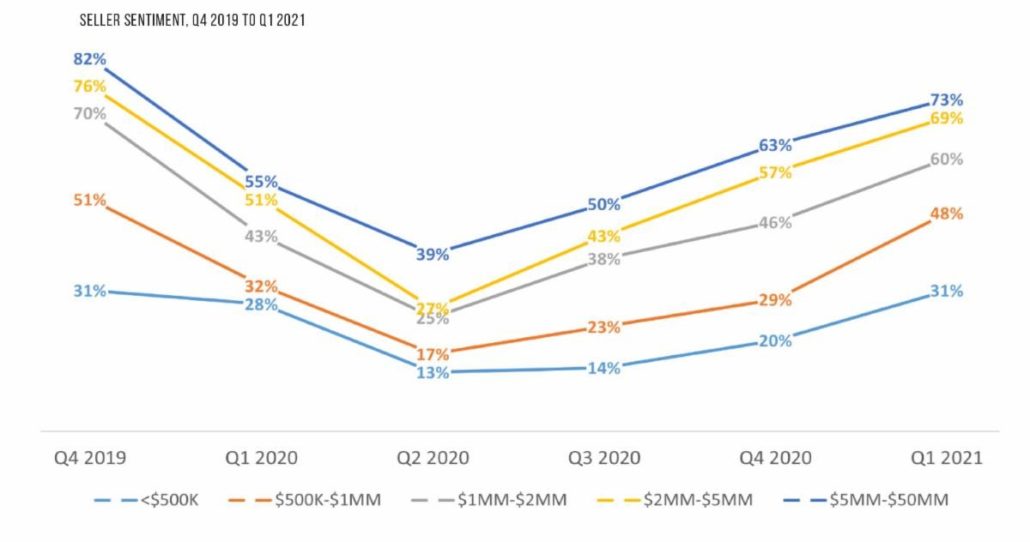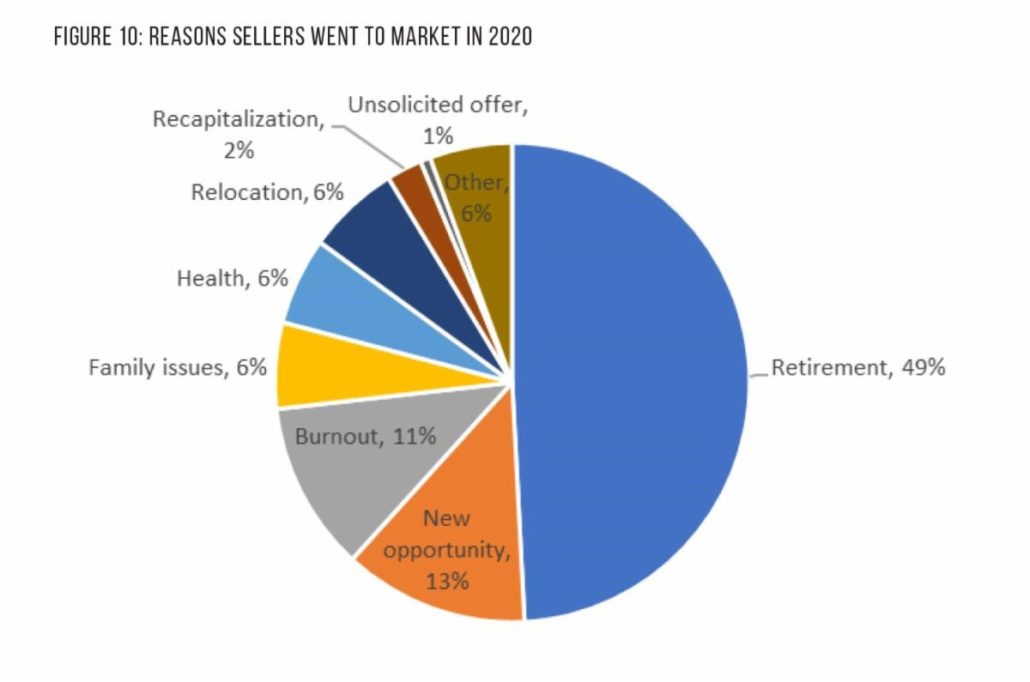When selling your business, you may receive offers from three kinds of buyers: Individual, financial, and strategic. Here’s a look at the most common buyers and where their motivations lie.
Individual buyer:
A first time buyer looks at the business to get out of corporate America and control their own destiny. Some of these buyers are passive searchers and others have very specific targets and timelines in mind.
The more motivated an individual buyer is, the more they’ll pay. But because they haven’t purchased a business before, they also tend to be more cautious. They will likely have personal guarantees on their loan, which means if the acquisition does not go right, they could lose everything.
Individual buyers will look at the business’s existing cash flow, determine what kind of salary they want to make, and then look to see how much cash flow is left over to pay the lender.
Another individual buyer is a serial entrepreneur—someone who started or bought a company, had a successful exit, and now wants to do it again. They have much the same risks and motivations, but they have more confidence because they have been successful before. That confidence means they may pay slightly more than the first-time buyer.
Financial buyer:
The largest group of buyers in the financial category is private equity (PE) firms. Twenty years ago, this was a very small segment of the buyer category. Now there are an estimated 4,000 PE firms throughout North America.
These PE firms have over $1.5 trillion of “dry powder,” in other words financial assets they need to put to work. And with interest rates as low as they are, investors will continue to pour money into PE firms as they have out-performed most other investment options.
A quick overview of how PE firms work: A PE firm will go out and raise a fund. They may get money from high-net-worth families, from individuals, or they may go to institutions, pension funds, large banks, insurance companies, etc.
Once the fund is raised, the PE firm typically has 10 years to find companies, purchase them, grow them, and sell them again. Therefore, most hold times are around five years +/-. PE firms may be motivated to pay more for a business to hit their investment timeframe.
The family office is much like the PE firms, but they can be a little more flexible. Generally, a family office is investing the funds from one high net worth family, usually $200+ million net worth.
They typically have “patient capital” which means they do not have to sell the company within a certain predetermined window of time. Also, they don’t have a set mandate to put capital to work by a certain deadline. Therefore, if they like a deal but see that several buyers are bidding it up, they may back out as they don’t have as strong a motivation to get their funds invested quickly.
In terms of deal structure, PE firms and family offices are most likely to offer the seller an ongoing equity stake in the business. This allows sellers to take advantage of future growth and get a second bite at the apple when the business is resold.
Another kind of financial buyer is the search fund. A search fund is often an investor-backed individual looking for a company to buy. These individuals will manage the company with the goal of providing a financial return for themselves and their investors.
One of the downsides here, is that if you get to the Letter of Intent (LOI) stage with a search fund, you often have to “resell” the deal to their investor team. When narrowing your buyer pool, you need to be careful that a search fund buyer really does have their investors on board.
Strategic buyer:
The strategic buyer is a company that is looking to grow by acquiring another business that has synergies with its own. For a synergistic buyer, 1+1=3.
Strategic buyers may be looking to grow market share in the same industry, find new products or services to sell to their existing customer base, get more control over their supply chain, acquire distribution channels, etc.
The strategic buyer can typically offer a higher value, but sometimes that value comes at a price. There may be redundancies or facility closures after a sale, for example. Likewise, strategic companies are least likely to offer the seller equity in the business going forward.
The takeaway here is that different buyers will see different value in the same company. They will also have different preferred deal structures. Which buyer you choose will often depend on what you value most in a deal.
Al Statz is the CEO of Exit Strategies Group. For more information on exit planning or to discuss a potential M&A or business valuation need, contact Al at alstatz@exitstrategiesgroup.com














